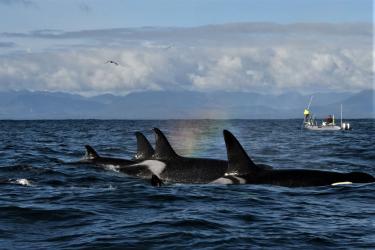The NOAA Restoration Center in the Office of Habitat Conservation, has been restoring habitat for almost 30 years. We’ve restored almost 150,000 acres of wetlands, rivers, coral reefs, and more. Ultimately, these projects lead to healthier, more abundant fish and wildlife, including endangered and threatened species that NOAA protects. These restored acres are a sample, representing the benefits of more than 3,000 different projects from Puerto Rico to Alaska, and Guam to Maine.
30 Projects Highlighting Our Work
![30 habitat restoration projects interactive story map 1659x1003.jpg]()
Explore our story map to take an interactive tour of 30 restoration projects.
The 30 projects highlighted here exemplify just some of the Restoration Center’s work over the last three decades. Our entire portfolio is led by science, engineering, and economics experts. We work in partnership with federal, tribal, state and local governments, nonprofits, and private industry. These efforts cover a wide range of geographies, habitat, and restoration techniques, and all come with community benefits working for you.
Habitat Restoration Works for Communities
Healthy habitat and the benefits it provides—from homes for fish and wildlife, to improved water quality, to protecting communities from storms—have tremendous value. Our experts have found that habitat restoration can support an average of 15 jobs per $1 million invested.
Jobs are directly created from restoration projects themselves, as well as from the results of completed projects, including tourism and recreation. Jobs aren’t the only economic benefits from these projects. Communities also can gain new infrastructure and coastal resilience from habitat restoration—protecting them from flooding, storms, and other public safety threats. Finally, we’re training veterans and young people through our veteran and conservation corps programs, to get them ready for future jobs in the growing restoration economy.
The NOAA Restoration Center
In collaboration with our national network of partners, we leverage funding, provide technical support, and develop high-quality restoration projects in four primary areas:
To grasp the larger breadth of our work, we also recently announced an update to the Restoration Atlas. This interactive tool lets you browse thousands of restoration projects by location, habitat type, and more. Its redesign makes it easier than ever to dive into our restoration work. Visitors can access nearly all of the almost 30 years’ worth of habitat restoration work including wetlands, rivers, oyster beds, and coral reefs.




